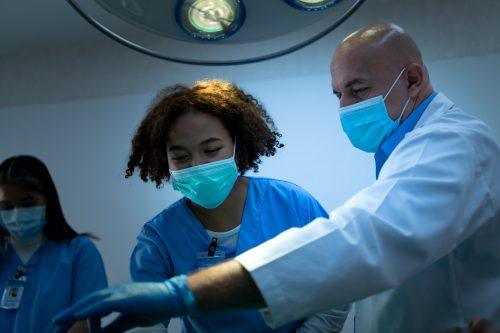Time is everything in the operating room. Patient safety, team coordination, and timely procedures all depend on a well-trained surgical team that can move together with precision. However, a growing shortage of perioperative nurses—and limited opportunities for hands-on education—has made training more difficult than ever. As highlighted in the AORN Journal article “Nursing Shortages in the OR: Solutions for New Models of Education”, the industry faces increasing pressure to adopt innovative training models that can meet demand without disrupting care. But here’s the challenge: how do you provide consistent, high-quality training without pulling valuable staff away from patient care?
Surgical teams need ongoing training—whether it’s to meet compliance standards, reduce errors, or improve communication. But taking nurses, techs, and surgeons off the floor for hours or days at a time just isn’t always realistic. That’s why more healthcare facilities are turning to smarter, more flexible training options that work around their teams—not against them.
Here’s how you can keep your surgical staff trained, sharp, and confident—without pulling them away from the operating room.
Training Surgical Teams Without Disrupting Patient Care
Every surgical procedure is a team effort. From the surgeon to the scrub nurse to the circulating tech, everyone has a role to play—and even one small mistake can have serious consequences.

In high-stakes environments like the OR, proper training isn’t a luxury—it’s a lifeline. Yet many healthcare facilities face a common dilemma: they know their teams need training, but they can’t afford to lose staff for extended in-person sessions. That’s where flexible, real-world solutions come in.
Use On-Demand Online Training Modules
One of the best ways to train surgical teams without disrupting patient care is through on-demand e-learning. These are self-paced, bite-sized courses that staff can complete between cases, during slower shifts, or even from home.
The advantages?
- No scheduling headaches
- No travel or off-site time
- Content that can be revisited when needed
Look for modules focused on areas like:
- Surgical safety checklists
- Infection prevention
- Aseptic techniques
- Time-out protocols
- Communication in the OR
When the content is engaging and relevant, your staff stays informed—without missing a beat on the floor.
Offer Microlearning During Downtime
We all know those rare but golden moments between surgeries or during slow shifts. Microlearning takes advantage of these small windows of opportunity by offering quick, focused lessons that last just 5–10 minutes.
Think of them as mini refreshers—perfect for reviewing protocols, updates, or new tools. Microlearning can include:
- Short videos
- Interactive quizzes
- Flashcards
- Quick-read infographics
These bite-sized lessons can be delivered via mobile apps, email, or internal platforms, making it easy for your surgical team to stay sharp—no matter how busy the day gets.
Integrate Training into Team Huddles
Team huddles before or after shifts are already part of many surgical departments. Why not use this time for brief training moments? You don’t need to hold a full seminar—just a quick tip, a discussion of a recent protocol update, or a review of a case that went well (or didn’t) can make a big impact.
These huddle-based trainings:
- Reinforce learning in real time
- Encourage team feedback and dialogue
- Keep education ongoing and practical
Plus, this approach fosters a culture of safety, where learning is a regular part of the job—not a disruption to it.
- Use Simulation—Without Leaving the Hospital
Simulation training is incredibly effective for surgical teams, especially when it comes to practicing emergency scenarios or complex procedures. But it doesn’t always have to involve expensive equipment or off-site centers.
Many facilities are now using portable or in-house simulation kits that can be set up right in the OR, break room, or training space. These allow your team to practice:
- Emergency responses (e.g., code blue in the OR)
- Team communication drills
- Instrument handoffs
- Proper gowning and gloving techniques
By simulating real-world scenarios in your actual environment, your team stays prepared—without ever leaving the building.
Assign a “Training Champion”
One of the most effective ways to ensure training gets done—without the need for big events—is to appoint a Training Champion on each shift or department.
This person can:
- Keep track of training goals
- Share quick updates or best practices
- Answer questions about protocols
- Encourage participation in ongoing education
It’s a peer-to-peer approach that builds ownership and accountability. And because it’s internal, it feels less like a “top-down” mandate and more like a team effort.
Track Training Progress Digitally
Paper checklists and attendance sheets are outdated. Instead, use a digital learning management system (LMS) to track who has completed which training, and when.
These systems:
- Send automatic reminders
- Let staff access materials 24/7
- Provide administrators with real-time progress reports
Even better? Many LMS platforms are mobile-friendly, so your surgical team can log in from a phone or tablet—whenever and wherever it’s convenient.
The Bottom Line: Training Should Empower, Not Interrupt
Healthcare providers shouldn’t have to choose between well-trained staff and consistent patient care. With the right tools and approach, you can do both. Flexible, practical, and on-the-floor training solutions are helping surgical teams stay current with protocols, reduce risk, and deliver better outcomes—all without stepping away from their core mission: caring for patients.
Final Thoughts: Bring Training to Where Your Team Works

Whether it’s quick refreshers between procedures, mobile modules your surgical team can access anytime, or short guided huddles, effective training is possible—without pulling anyone off the floor.
At American Medical Compliance, we help healthcare providers deliver smarter, more efficient education through customized training programs tailored to your workflows. Our approach ensures regulatory compliance, enhances team efficiency, and builds trust in every procedure performed.
Ready to boost performance and meet compliance without disrupting care? Need a solution built around your team’s real schedule and needs?
Enroll your team in our customized, free course development program today—and let’s build a safer, stronger OR together. Click here to get started.



